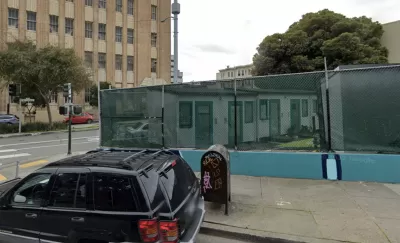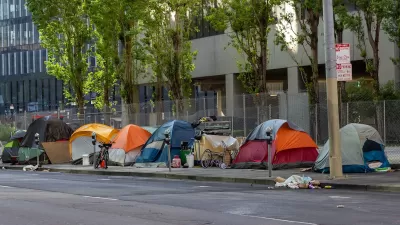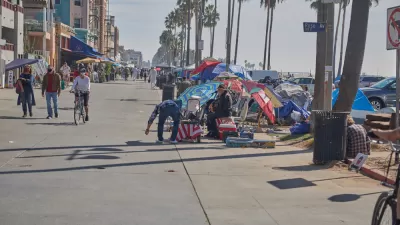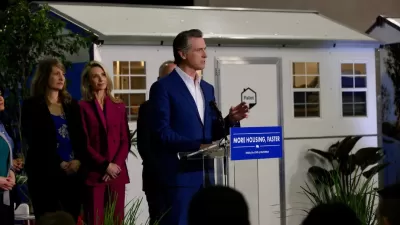Citing ‘absurd’ costs and community concerns, city supervisors are reevaluating a plan to build a ‘tiny home village’ for unhoused residents in the Mission District.

San Francisco’s Mission District may not get a proposed ‘tiny home’ village after all, reports Trisha Thadani for the San Francisco Chronicle. The proposal faces backlash from local residents and concerns that its costs, projected at $100,000 per unit, are out of line with similar projects, which reportedly cost as low as $10,000 per unit. While not a panacea for the housing crisis, tiny home villages are viewed as a cost-effective and fast way to build additional shelter and get people indoors and connected with services.
“The drama over the project provides a window into just how hard it is for the city to scale its housing and shelter system, even as a recent report from the Department of Homelessness and Supportive Housing (HSH) estimated it would take more than 6,000 extra temporary and permanent beds to solve the crisis on the streets.”
The vacant city-owned lot where the community would be sited will be developed into affordable housing starting in 2025, Thadani points out. “Until then, officials hoped they could use the site to shelter those who are currently homeless in the Mission, which has struggled with a rise of people living in tents, drug use and illegal vending over the past few years.” The village would be the city's second such community. But local residents spoke out against the project, prompting county supervisors to put the plan on hold. The project was allocated $7 million, a price tag officials say could come down. Meanwhile, the difficulty of finding financially viable locations that won’t encounter neighborhood opposition makes the process of building affordable and supportive housing in San Francisco painfully slow.
FULL STORY: Neighbors fight pricey S.F. plan to build tiny homes for the homeless

Planetizen Federal Action Tracker
A weekly monitor of how Trump’s orders and actions are impacting planners and planning in America.

Map: Where Senate Republicans Want to Sell Your Public Lands
For public land advocates, the Senate Republicans’ proposal to sell millions of acres of public land in the West is “the biggest fight of their careers.”

Restaurant Patios Were a Pandemic Win — Why Were They so Hard to Keep?
Social distancing requirements and changes in travel patterns prompted cities to pilot new uses for street and sidewalk space. Then it got complicated.

Platform Pilsner: Vancouver Transit Agency Releases... a Beer?
TransLink will receive a portion of every sale of the four-pack.

Toronto Weighs Cheaper Transit, Parking Hikes for Major Events
Special event rates would take effect during large festivals, sports games and concerts to ‘discourage driving, manage congestion and free up space for transit.”

Berlin to Consider Car-Free Zone Larger Than Manhattan
The area bound by the 22-mile Ringbahn would still allow 12 uses of a private automobile per year per person, and several other exemptions.
Urban Design for Planners 1: Software Tools
This six-course series explores essential urban design concepts using open source software and equips planners with the tools they need to participate fully in the urban design process.
Planning for Universal Design
Learn the tools for implementing Universal Design in planning regulations.
Heyer Gruel & Associates PA
JM Goldson LLC
Custer County Colorado
City of Camden Redevelopment Agency
City of Astoria
Transportation Research & Education Center (TREC) at Portland State University
Camden Redevelopment Agency
City of Claremont
Municipality of Princeton (NJ)





























